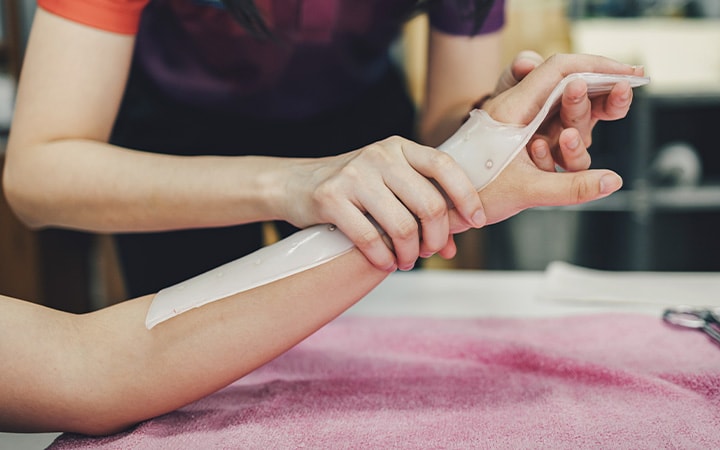Living Pain-Free With Arthritis: Is It Possible?
May 31, 2023

Arthritis commonly occurs as people age. However, the disease does not have to be debilitating.
Physical and occupational therapists have unique approaches to help alleviate the effects of arthritis for many people. Combined with other therapies like medication and surgery (when needed), the benefits of occupational and physical therapy make it possible for many people with arthritis to live pain-free.
What Is Arthritis?
Arthritis is inflammation or swelling of one or more joints. More than 100 types of arthritis and related conditions exist, including those that result from joint wear and tear over time and others caused by autoimmune disorders.
Many people with arthritis, particularly those who are not surgical candidates, believe there is nothing they can do to relieve their condition – and that they should just learn to live with it. Rehabilitation therapies can help relieve the symptoms of arthritis by enhancing or restoring functional ability and quality of life.
How Can Occupational Therapy and Physical Therapy Help?
Though they share similarities, occupational therapy and physical therapy are distinct forms of rehabilitation therapy. The goal of occupational therapy is to improve, rehabilitate or maintain a person’s motor skills and ability to perform specific everyday tasks and activities. The goal of physical therapy is to improve or restore a person’s mobility and range of motion, while relieving their pain and reducing the need for surgery and medication.
Occupational and physical therapy won’t reverse or cure arthritis, but they can reduce and sometimes eliminate the pain, swelling and stiffness associated with the disease. When a physical or occupational therapist first sees a patient with arthritis, they look for clinical signs of the disease, including posture issues, decreased range of motion, decreased strength and walking/gait problems. Based on their initial assessment, the therapist develops a customized therapy program to address the “deficits” that cause or contribute to the patient’s joint pain. These deficits are usually a loss of strength, motion and/or flexibility.
A customized occupational or physical therapy program for arthritis typically includes some combination of the following:
- A personalized exercise regimen
- Manual therapy
- Some combination of therapeutic modalities: these can include electrical stimulation, hot/cold packs, ultrasound therapy and traction therapy
- Joint bracing/splinting
- Aquatic therapy
The goal of these interventions it to improve joint stability, flexibility and body mechanics in order to reduce pain and stiffness while improving overall joint function.
Balance Between Movement and Rest
In treating arthritic joint pain and stiffness, occupational and physical therapists emphasize the importance of maintaining a balance between the amount of movement and rest a patient engages in every day. While the adage “motion is lotion” is essentially true, avoiding extremes of movement is just as important. In other words, too much motion can lead to increased joint pain, swelling, inflammation and even a fear of movement. Conversely, not enough motion can cause increased joint pain, stiffness and decreased mobility.
Occupational and physical therapists help their patients follow a series of slow, steady and gradual progressions to improve their movement and joint function. Patients are guided through these therapies to ensure that an appropriate level of intensity is not exceeded in each phase.
Joint Protection
Occupational and physical therapy can also help people with joint protection. Some of the strategies they teach include:
- Using proper body mechanics.
- Relying on larger joints and more stable joints to complete tasks.
- Organizing tasks to reduce the physical effort required.
- Recognizing and respecting pain: not pushing yourself too much and taking breaks when you need them.
In addition, occupational and physical therapists may recommend the use of adaptive equipment to help with basic daily activities. This type of equipment includes:
- Sock aides (assistive devices that allow people to put on their socks more easily).
- Reachers/grabbers (tools that help people reach for objects that would be difficult to grab otherwise).
- Electric can openers and jar openers.
- Pen grips to make writing easier.
If you have arthritis, and you notice a decline in your mobility, ask your doctor about referring you to a physical or occupational therapist.
Related Links
Danielle Marris, PT, and Jean Petkac, OT, both therapists with UH Rehabilitation Service at UH Sharon Health Center, along with Tom Szakal, PT, at UH Richmond Heights Outpatient Campus, all contributed to this article.


